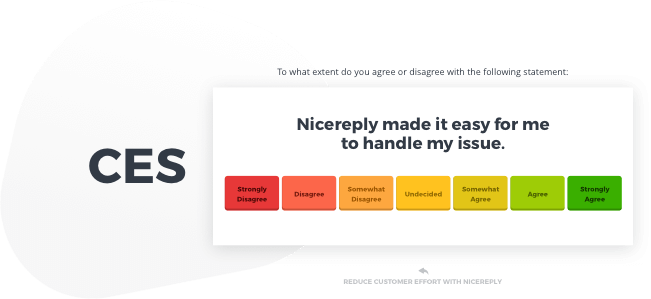A sales pitch is like courtship. It should promise the customer great things. But when they buy, it is your turn as a business to deliver and exceed expectations.
Businesses have mastered the art of sales, with numerous innovations and investments from old-school tactics to AI chatbots.
However, the best efforts should be during the delivery phase; give the customers reason to celebrate choosing you. Then the business will grow and customers will have higher lifetime values.
Customer lifetime value is a predictive metric that helps businesses estimate how much revenue they will earn from customers in their lifetime. To predict revenue from existing customers, you need to know if they are likely to keep buying from you.
In other words, you need to know how the relationship is from their perspective. Cue – customer health scores.
 What are customer health scores?
What are customer health scores?
Customer health scores describe how customers feel about your goods and services; and whether they want to leave or stay.
You can predict the likelihood of returning and continual sales by finding out whether your customers are happy with the current product or service.
Customer health scores are not standard for all businesses. Each business considers its unique metrics to come up with its customer health scores.
For instance; e-commerce businesses look at factors such as order frequency. Educational institutions may look at metrics such as class attendance. Dining establishments might even consider volumes of leftovers as one of the indicators of customer health!
 The importance of customer health scores
The importance of customer health scores
Just as the maxim of “happy spouse, happy house” goes, it is true that happy and healthy customers mean better business, and for several reasons:
- Customer health scores are essential to the creation of a retention strategy. Once you know if customers are likely to stick or not, you can plan to increase satisfaction and retention.
- When you know customer health scores, you can predict expected revenues to a higher level of accuracy.
- A deeper look into customer health metrics helps you know how to improve products/services and the customer experience. Such improvements can spur growth in revenues and market share.
If you’ve already spent a world of effort to acquire your customers, from prospecting customers to email outreach campaigns and onboarding, customer health scores can help you optimize your customer acquisition efforts.
 Create a customer health scoring framework in 4 steps
Create a customer health scoring framework in 4 steps
So now that we have established the importance of customer health scores, here’s how you can create one in 3 simple steps.
 1. Segment your Users
1. Segment your Users
Honing in on customer health scores can be a daunting task if it is cast in too wide a net. Before you start, it is important to first have a clear picture of customer groups before creating customer health scores.
One of the things you should also consider is what segments would be relevant for your business.
In some businesses, customer tenure might be an indicator of customer happiness compared with those who have been customers for less than a year. In others, customer satisfaction can be measured by average order value or the number of new orders placed in a month.
So, before scoring customer health, divide your customers into subgroups based on factors such as:
- Product type and tier (paid vs free)
- Use of product
- Stage in the customer lifecycle
- Spending
If it sounds like a lot, don’t fret. There are many existing CRMs with segmentation capabilities in the market that can make this process as efficient as possible.
 2. Create Personas
2. Create Personas
Besides segmentation based on product consumption, it is important to segment customers based on their characteristics. Different people or business entities also tend to use the same products and services differently. Categorize personas using criteria such as;
- Gender
- Size of company
- Industry/niche
- Location
- Age
There are infinite criteria that you can use to segment customers. However, stick to a few segments that describe big but discrete subsets of your customer base.
Deciding on the customer segmentation criteria before identifying the customer health metrics is crucial. You need to have the relevant information on what’s important to these different customers to create metrics that speak to their well-being.
 3. Define the Metrics
3. Define the Metrics
Now that you have segmented your customers and given them personas, you can now define how you will measure their health scores. Metrics give us a good picture of how customers experience products and services. We can get some information from customers, while other information comes from customer databases.
Factors and elements that contribute to customer health scores will focus on three main pillars:
- Whether customers are getting value from the product/service.
- Whether customers are having a positive experience in their interactions with your business.
- Whether there are external factors that may cause the customer to stop using your product.
Key metrics that contribute to the customer health score focus on product usage and responses to surveys.
Product usage
If your business deals in SaaS, online, and software products, it is easy to track product usage. Measure behaviors such as the number of sessions, session durations, reports downloaded, and features deployed.
If you run an e-commerce business, measure order frequency, order volumes, and participation in loyalty programs.
For those selling goods and services, tracking product usage is more complicated. You’ll rely more on surveys, product returns, and sales numbers to understand product usage.
Responses to surveys
Surveys help us understand what customers think and feel about your business and products. Responses from surveys are only helpful when you send out the right questions and oftentimes with incentives.
Though surveys allow us to hear straight from the customers, they don’t provide perfect information. The key weakness of surveys is that people who participate are often those with more positive or negative experiences of products or services.
Before running surveys, set clear objectives and questions so that you receive data that makes sense. Surveys usually help a business to find out metrics such as:
 Net promoter score (NPS)
Net promoter score (NPS)
To know the NPS, send out a survey asking people if they would recommend your business to someone else. The answers to the question can be in multiple choices e.g from 1 to 10.
1 being least likely to recommend (detractor) and 10 being most likely to recommend (promoter). Then use the responses to calculate how many customers would promote you and how strongly they would do it. That is the NPS metric.
 Customer satisfaction score (CSAT)
Customer satisfaction score (CSAT)
Ask customers how satisfied they are with your product or service. This information can help you know if the product is creating value for your customers.
You can send a simple question such as, ‘how satisfied are you with the product/service?’ Then give respondents a score of 1 to 10 to choose from. Another approach is to create a survey with multiple choices ranging from the spectrum of dissatisfied to highly satisfied.
A visual survey is also effective, as done by NiceReply.
Then measure the percentage of those who are satisfied and highly satisfied to get the CSAT.
 Customer effort score (CES)
Customer effort score (CES)
Customer Effort Score tells us how hard it is for our customers to get help or resolve issues. This helps us understand the customer experience. To know your customer effort scores, you can send out a survey question asking questions such as: How easy was it to complete your online order?
Responses can be in the form of emojis. Then the customer can respond by choosing an answer that corresponds with how easy it was.
While most survey questions can give you the aggregated data, you need to ultimately dig deeper to understand why if you want to make a difference.
While it may seem overwhelming, there are many tools out there that can help. As an example, Nicereply comes with a dashboard to give you at-a-glance monitoring of key customer health metrics with trends over time. This will help greatly in giving you the bigger picture, further identifying any issues, and seeing whether changes made have been effective.
Other contributors to customer health scores
Besides asking customers how they feel, you can look at your customer data and the environment for clues about their wellbeing. Here are some of the main factors to observe:
External factors
Factors such as mergers, short-term projects, and financial challenges can cause your client to stop using your product or service after some time.
Also, some industries and businesses are getting obsolete with time. For instance, movie rental businesses have slowly been replaced by online streaming services.
Tickets
The number of tickets raised by customers can point to issues with the product or support. Also consider the types of tickets, sentiment, and types of customers raising these tickets.
After customer interactions, you can send in signature email surveys to find out if the customer was satisfied:
Engagement
Customer engagement can tell us about customer health. Engagement includes responses to surveys, comments on blogs, replies to emails, participation in rewards programs, consumption of resources such as onboarding training.
Sentiment
Sentiment refers to the type of communications that customers use about your business. Analyze sentiment in your customer support inbox, social media, as well as comments on your posts. All these give you a sense of whether customers are happy or not.
 4. Calculate the customer health scores
4. Calculate the customer health scores
We’ve listed factors and metrics. Identify the metrics, segments, and factors that make sense for your business. Now we need to recognize that each factor and metric has a different level of significance in the overall customer health.
Weighing
Assign weights based on the perceived impact of a factor or metric. For instance, you might give customer sentiment a different weight than NPS when calculating the overall health score. The total health scores system can be from 0 to 100. Each metric might add to the score or reduce the score depending on its significance.
Once you have health scores categorize customers into 3 groups:
- At-risk
- Ok
- Healthy
Armed with this information, you can then proactively work to retain and maintain the health of your customers. This will also allow you to create robust retention plans and grow your revenue sustainably.
 Plan and take action
Plan and take action
Now that you know customer health, initiate actions that will improve customer health for at-risk and ok customers. Come up with an action plan to address weak points in your product, customer support, or communication structures.
For instance, slow product adoption can be combated by better customer education.
You can reinforce customer education in different ways online including in-app mini-tutorials, and videos. To complement these, you can send behavior-triggered automated emails based on tasks they fail to do or features they seem to ignore. Other measures can include:
- Improving customer support
- Optimizing onboarding processes
- Customer and team education
- Streamlining marketing and communications
The health of your customers starts with you
The rise of the pandemic has placed many businesses with the responsibility to create initiatives supporting their employees’ mental health. Arguably, measures should have been taken proactively and not spurred by unprecedented events.
Similarly, this principle should be applied to your customer’s health. Don’t wait until they’re in critical conditions before trying to salvage it. Just like any relationship, work needs to be put in, and as you’ve read, it only takes 4 simple steps.
And of course, like all lasting romance, the courtship with your customers should never end.










